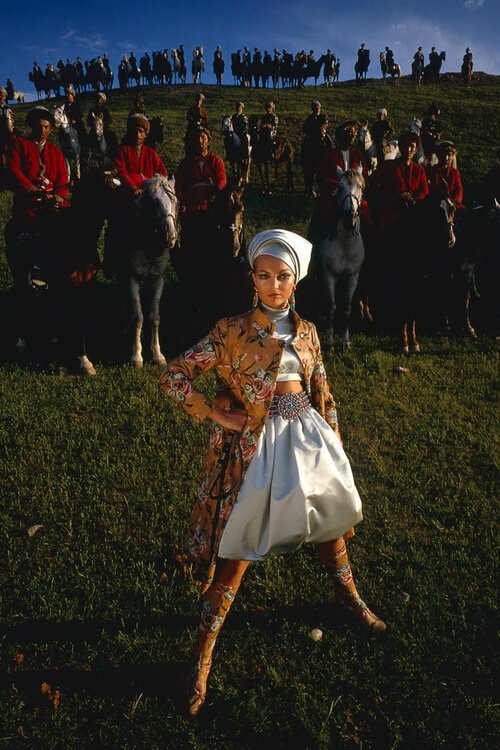Fred Maroon
Fred J. Maroon (American, 1924-2001) was a photographer of international renown. His career spanned more than half a century and touched on topics ranging from fashion to food and architecture to politics. In addition to the numerous awards garnered during his career, Maroon’s works are featured in the permanent collections of the Museum of Modern Art, the Metropolitan Museum of Art, the International Center of Photography, and the Library of Congress.
Maroon began his interest in photography with a Kodak Brownie camera which is mother famously threw it out a second-story window one day claiming he was wasting too much time with it and ignoring his paper route. He served as a signalman in World War II and thereafter studied architecture at the Catholic University of America in Washington D.C., where he was editor-in-chief of the school yearbook, The Cardinal.
When he graduated from college, he was hired by Life Magazine in New York, and at the same time was awarded a scholarship to do graduate architectural studies at the École Supérieure des Beaux-Arts in Paris. With the offer from Life Magazine to be a ‘stringer’ in their Paris bureau for the year, Maroon was able to travel extensively through post-war Europe. He went to 19 different countries capturing the history, devastation, and rebirth he found on the continent – the people and places were seen through the eyes of a young American war veteran, fresh out of university, curious yet unsophisticated, as he intuitively reacted to the scenes he witnessed.
Through the second half of the 20th century, Maroon did a series of coffee-table books and photographed for many leading magazines. Among those were a series of eight fashion stories he did between 1960 and 1970 in remote and challenging locations for Look Magazine in Mongolia, Afghanistan, Eygpt, Russia and Japan. In 2013, these photographs were brought together for the first time in an exhibition of fashion photography works at Artist’s Proof Gallery in Washington D.C.
His most significant historical work was made during the Nixon administration. Following his book ‘Courage and Hesitation’, stories about Watergate began to break and Maroon realizing that something of great significance was taking place, covered it extensively. The resulting collection begins with Nixon’s 1972 reelection campaign and runs through his resignation in 1974. Because of what Maroon described as the “negative and worrisome mood” of the country, he locked away 576 rolls of Watergate film and did not allow most of his pictures to be published until 1999 in The Nixon Years, 1969-1974, White House to Watergate. The Smithsonian did an exhibition of these photographs in that year as well.
Fred Maroon was the recipient of Gold Medal awards from the Art Directors’ Clubs of Metropolitan Washington and New York. His work was exhibited throughout America and abroad, including the Metropolitan Museum of Art and the Museum of Modern Art, in New York, and the National Gallery of Art and the Library of Congress, in Washington DC. He had one-man exhibitions at the Corcoran Gallery, the Smithsonian Institution, and the United States Capitol in Washington DC. In June 1995 he had an exhibition, “Politics and Poetry,” at the Leica Gallery in New York. A posthumous exhibition, “Sorrow and Splendor: Images of Europe, 1950 – 1951,” was held at the Kathleen Ewing Gallery in Washington, DC in 2002.
His photographs have been exhibited in major national museums as part of the “Photography in the Fine Arts” exhibitions, which are now in the permanent collection of the International Center of Photography in New York. Among his many honors were four First Prize awards in the annual White House News Photographers’ Association competitions. Mr. Maroon lectured extensively throughout the United States and abroad. In 1986 and 1990 he exhibited and lectured at Photokina in Cologne, Germany, and in October 1986 he lectured as part of the National Geographic Society’s “Masters of Photography” series. In 1990 Mr. Maroon was part of the Smithsonian Institution’s “Masters of Photography” series.












